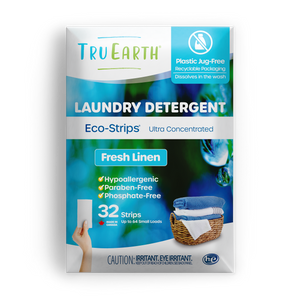Living with black mold is not just unsightly; it poses serious health risks. Finding effective ways to remove it is essential for a safe and healthy living environment. This guide explores the methods and precautions necessary to tackle black mold, providing you with the knowledge to take action.

Understanding the Enemy: What is Black Mold?
Understanding black mold is essential. Stachybotrys chartarum, commonly known as black mold, is a type of fungus that thrives in damp, humid conditions.
It appears black or dark green and typically grows on materials with high cellulose content, such as wood, paper, and drywall. Recognizing this mold is key because not all molds are black, but the presence of black mold should be addressed promptly due to its potential health hazards.
Identifying Black Mold in Your Home
Recognizing black mold is the first step in dealing with it effectively. It often appears as slimy and greenish-black, though its appearance can vary.
The distinctive musty odor is another indicator of black mold infestation. Check areas prone to moisture, such as bathrooms, basements, and kitchens, as these are common breeding grounds. Regularly inspecting these areas allows for early detection and intervention.
Health Risks Associated with Black Mold Exposure
The potential health risks associated with exposure to black mold underscore the urgency of taking immediate action to remove it from your living space.
Black mold, scientifically known as Stachybotrys chartarum, releases mycotoxins during its growth and reproduction phases. Here's an in-depth look at the health risks associated with exposure to black mold:
Respiratory Issues
- Symptoms: Prolonged exposure to black mold spores can trigger respiratory problems, such as coughing, sneezing, wheezing, and difficulty breathing.
- Explanation: Mold spores can become airborne and be inhaled into the respiratory system. The mycotoxins produced by black mold may irritate the respiratory tract, leading to inflammation and a range of respiratory symptoms.
Skin Irritation
- Symptoms: Skin rashes, redness, and irritation are common skin reactions to black mold exposure.
- Explanation: Direct contact with black mold, its spores, or mycotoxins can cause skin irritation, particularly in individuals with sensitive skin. The severity of reactions varies based on the duration and intensity of exposure.
Persistent Headaches
- Symptoms: Chronic headaches and migraines may occur as a result of black mold exposure.
- Explanation: Mycotoxins released by black mold can affect the nervous system, potentially leading to headaches. Individuals prone to migraines or tension headaches may experience an increase in the frequency and intensity of these symptoms.
Allergic Reactions
- Symptoms: Allergic reactions, such as sneezing, runny or stuffy nose, itchy or watery eyes, and skin reactions, are common.
- Explanation: Black mold is a known allergen, and exposure can trigger allergic responses in susceptible individuals. These reactions can be similar to hay fever symptoms and may worsen with continued exposure.
Aggravation of Existing Conditions
- Risk: Individuals with compromised immune systems, respiratory conditions like asthma, or existing allergies are at higher risk.
- Explanation: Those with weakened immune systems or pre-existing respiratory conditions may experience more severe health effects when exposed to black mold. The mold can exacerbate existing health issues and lead to complications.
Long-Term Effects
- Risk: Prolonged exposure to black mold may contribute to chronic health issues.
- Explanation: While the immediate symptoms of black mold exposure are concerning, the potential long-term effects are equally alarming. Chronic exposure may contribute to persistent health problems, making prompt removal and preventive measures essential.
Knowing these health risks emphasizes the need for proactive measures to identify and remove black mold from your living space promptly. If you suspect black mold or experience unexplained health issues, consult with a healthcare professional and address the mold issue to create a safe and healthy home environment.
DIY Removal Methods: Can You Do It Yourself?
While professional help is advisable for extensive infestations, you can tackle smaller areas of black mold on your own. A mixture of white vinegar and baking soda is a popular DIY cleaning solution.
Vinegar's acidity and baking soda's abrasive properties create an effective mold-killing combination. Apply the mixture to the affected area, scrub with a brush, and wipe clean. Ensure the area is thoroughly dried afterward to prevent future mold growth.
Protective Measures: Gear Up Before Battling Mold
Before engaging in mold removal, don't forget to gear up. Wear protective clothing, including gloves, a mask, and goggles, to shield yourself from potential exposure.
This precautionary step is key, especially when handling cleaning agents or actively scrubbing affected areas. Ensuring proper ventilation in the space you're cleaning is equally important to minimize inhaling any airborne mold particles.
When to Call in Professionals
If the black mold infestation is extensive or if you have underlying health conditions, it's prudent to seek professional help.
Mold remediation experts possess the necessary knowledge, equipment, and protective gear to handle large-scale infestations safely. They can also identify the root cause of the mold growth and provide guidance on preventing its recurrence.
Preventing Black Mold Regrowth: Long-Term Solutions
Removing black mold is just the first step; preventing its return is equally important. Addressing the source of moisture is key.
Fix leaks promptly, improve ventilation in damp areas, and consider using dehumidifiers in spaces prone to humidity. Regularly clean and inspect your home, especially areas susceptible to mold growth, to catch any potential issues before they escalate.

A Mold-Free Home Awaits!
Dealing with black mold may seem daunting, but with the right knowledge and approach, it's a manageable task. Swift action, proper protective measures, and preventive strategies are your allies in creating a mold-free and healthy living environment.
Regular maintenance and a vigilant eye will help ensure that your home remains a haven free from the clutches of black mold.


